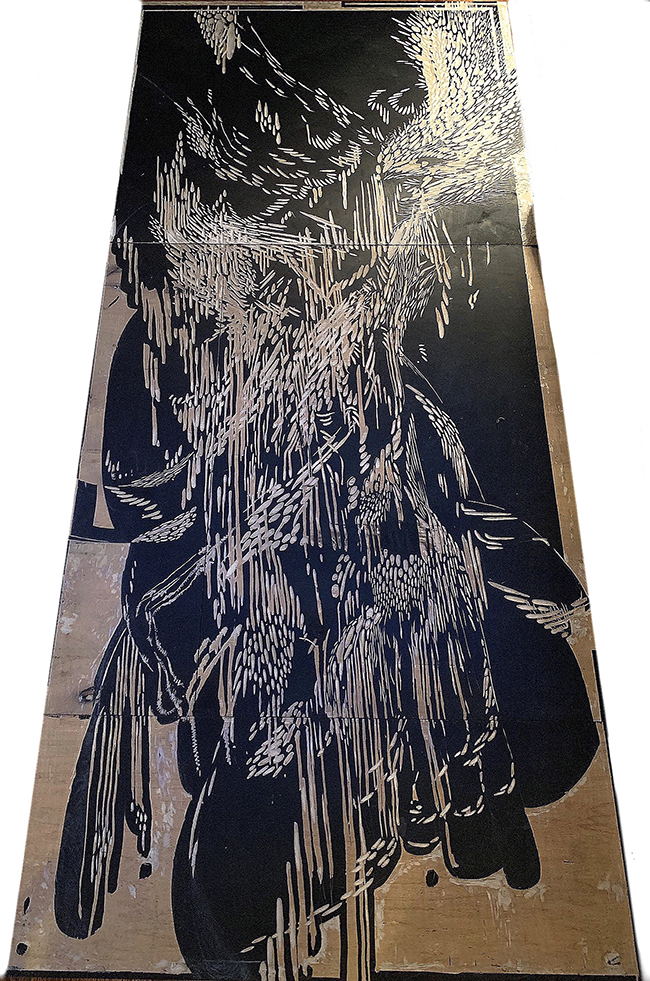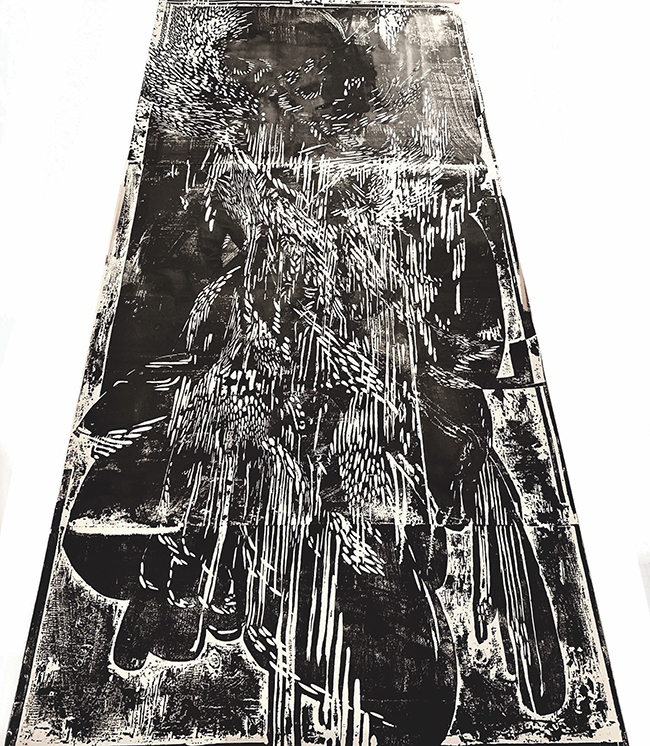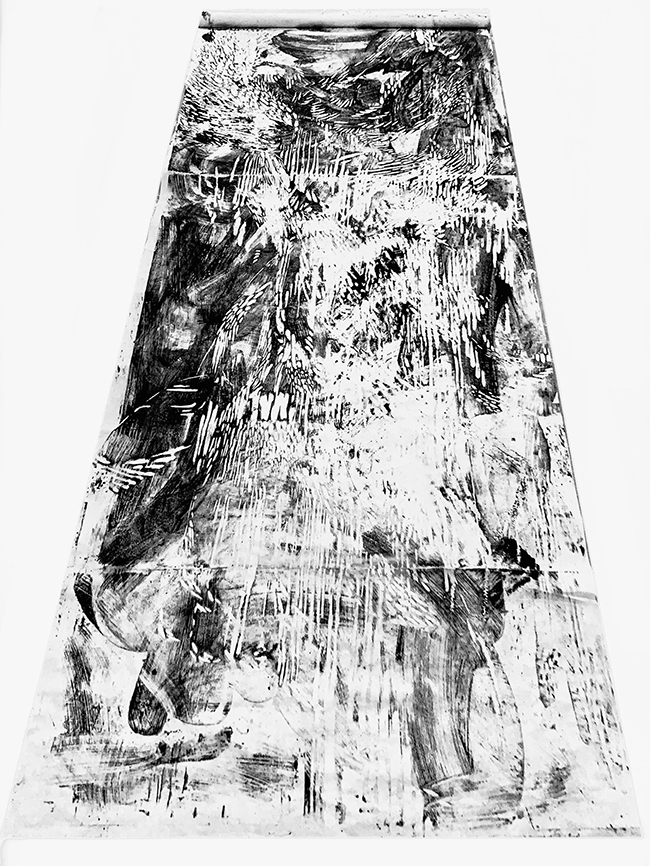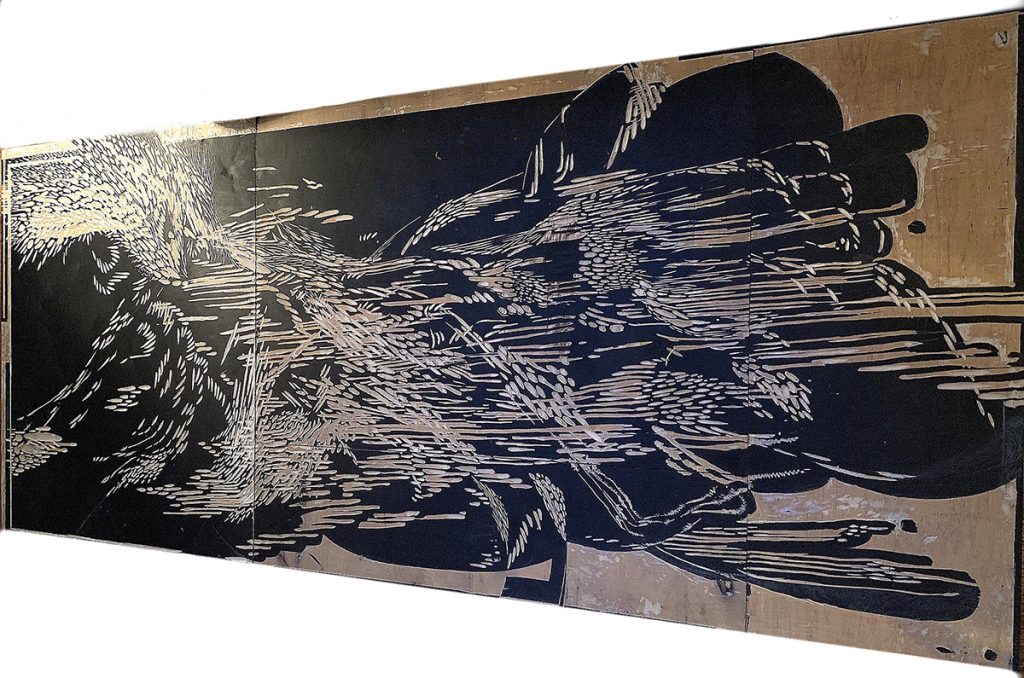Carolin Rechberg is an interdisciplinary artist whose practice lives at the crossroads of mediums, senses, and ideas. Born in Starnberg, Germany, she has cultivated a body of work that defies containment. Her creative reach extends across ceramics, drawing, installation, illustration, painting, performance, printmaking, photography, poetry, sculpture, sound art, textile design, and voice work. What connects these seemingly diverse practices is her devotion to process. For Rechberg, making is not simply a route toward a finished object—it is the core of the art itself. Each gesture, each material, each sound or mark carries the weight of experience and becomes a thread in the broader tapestry of her life and work. She treats the act of creation as a multisensory journey, one that sharpens awareness, deepens reflection, and allows for continual re-perception. Her art insists that the way something comes into being is just as meaningful as what finally exists in the world.

Transitions: A Work of Endurance and Reflection
Among Rechberg’s wide-ranging projects, Transitions II stands out as a monumental exploration of grief, endurance, and renewal. This polyptych woodblock relief print was hand-printed in 2019 on Somerset and Mulberry papers, stretching across a formidable 152 x 365 cm. It represents not only an artistic achievement in scale and technique but also an intimate processing of personal loss: the death of her father.
Rechberg began the project by naming it simply Transitions—an apt title for the life changes and emotional terrain she was crossing at the time. Carving the four-part woodblock was an act of physical and emotional labor, one that required patience, persistence, and an openness to feeling both the weight of mourning and the vitality of being. She has described the carving as a way of digesting her experience, allowing her body to move through grief while celebrating the force of life that persists even in the shadow of death.

Marks as Memory
Every cut, curve, and gesture in Transitions II is imbued with this layered meaning. For Rechberg, the marks are not simply formal elements; they are embodied memories, physical records of the moments in which they were made. The flowing lines resemble figures, clouds, and landscapes, all emerging from the interplay of pressure and release. Viewers may see feminine forms, sensual rhythms, or shifting perspectives within the expansive print, but what grounds it all is the sense of energy that pulses through the work.
The carving became a space for her to test physical boundaries, to feel the push and pull between exhaustion and resilience. This endurance is mirrored in the surface of the woodblock itself, where the density of cuts accumulates like a record of breath, labor, and persistence. The print embodies not just imagery but motion, grace, and strength, carrying the imprint of the body as much as the mind.

A Work That Changes With Time
One of the most compelling aspects of Transitions II is its openness to reinterpretation. Rechberg has emphasized that the meaning of the work is not fixed. As her life shifts, as she gains new knowledge or lives through new experiences, the piece continues to evolve in her perception. This quality allows the work to mirror the human condition itself: always in flux, always redefined through time.
What began as a meditation on mourning also holds joy, sensuality, and discovery. The layers of ink and rice paste pressed into the paper invite fresh encounters with each viewing, reminding us that art, like life, cannot be fully understood in a single moment. Instead, it requires revisiting, reflection, and the acceptance that meaning itself is transitional.
Continuum and Invitation
At its core, Transitions II is not just a personal expression but an invitation. Rechberg frames it as a continuum of reflection, a work that asks the perceiver to enter into its journey. The sheer scale of the polyptych demands physical engagement: viewers must step back to take in the whole and then move closer to explore the intricacies of texture and mark. In this act, they mirror the very process Rechberg experienced while making it—shifting perspectives, moving between the intimate and the vast, between grief and celebration.
Through this encounter, the work becomes a shared space of contemplation. The viewer’s own experiences and perceptions fold into the rhythms of the carving, adding new layers of meaning to the continuum. In this way, Transitions II is never complete. It lives and breathes through interaction, through the ongoing dialogue between the entity, its environments, and those who meet it.
Conclusion
Carolin Rechberg’s Transitions II embodies her belief that process is inseparable from art. The carving, printing, and physical engagement with the woodblock became acts of endurance, mourning, and transformation. Yet the finished work is not a static monument to grief—it is a living surface that continues to change, adapt, and invite new interpretations.
In Rechberg’s hands, art is not confined to the gallery wall or studio floor. It is a practice of being alive, of moving through experiences, and of allowing every mark, sound, or gesture to carry us deeper into the present moment. Transitions II reminds us that the work of art, like life itself, is always in transition.

